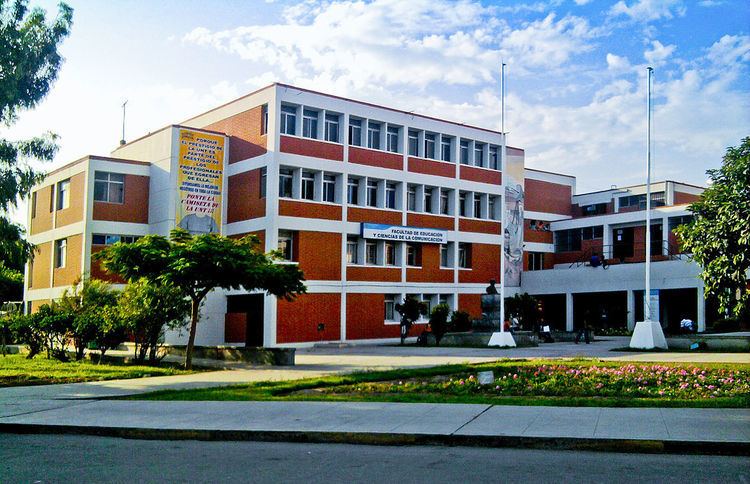Type Public University Administrative staff 3,000 Campus 35 ha Acceptance rate 18% (2010) Total enrollment 19,000 (2011) Academic staff 12 | Established May 10, 1824 Students 19,000 Phone +51 922 185 540 Founded 10 May 1824 | |
 | ||
Notable alumni César Acuña Peralta, Víctor Raúl Haya de la Torre, Ciro Alegría, Eduardo González Viaña, Carmen Rosa Núñez Similar Antenor Orrego Private U, National University of San M, Private University of the North, Universidad Nacional de Cajam, Universidad Nacional Pedro Ru | ||
04 universidad nacional de trujillo national university of trujillo trujillo tour
The National University of Trujillo (Spanish: Universidad Nacional de Trujillo) (UNT) is a major public university located in Trujillo, Peru, capital of the department of La Libertad. The university was founded by Simón Bolívar and José Faustino Sánchez Carrión, who met in Huamachuco; they signed the decree of foundation on May 10, 1824, before Peru's independence from Spain. National University of Trujillo, was the first republican university founded in Peru.
Contents
- 04 universidad nacional de trujillo national university of trujillo trujillo tour
- History
- Organization
- Notable students
- References
UNT has approximately 19,000 students in 12 academic faculties, making it one of the largest universities in the country. The current headmaster is Dr. Victor Carlos Sabana Gamarra.
The UNT is ranked as one of the best universities in Peru.
History
The National University of Trujillo is a Peruvian university located in the city of Trujillo, La Libertad Region in northern Peru whose acronym is UNT, was founded during the Republican era by General Simón Bolívar, who issued from his headquarters in the Huamachuco a decree founding the university in May 10, 1824, having as secretario Don José Faustino Sánchez Carrión. The first director was Don Carlos Pedemonte y Talavera and whose term begins on October 22, 1831. On 23 November 1831 the Government appointed as supreme patron of the University to St. Thomas and St. Rose of Lima, where it ran. The first colleges environments were inside the school founded by bishops El Salvador. The first classes were Dogmatic and Moral Theology, Canons and Laws, Anatomy and Medicine, Philosophy and Mathematics. The first academic degrees awarded by UNT were those of Bachelor, Master and Doctor of Laws and Sacred Canons. It adopts the College system starting in 1861. From Its classrooms exited the universal poet César Vallejo in 1916, the first political philosopher Antenor Orregoin 1928, Víctor Raúl Haya de la Torre, Eduardo González Viaña, Carlos Hugo Garrido Chalén, among others.
Organization
UNT is organized into 12 faculties which contain 35 professional academic schools.
Notable students
Among former renowned professors and students are:
